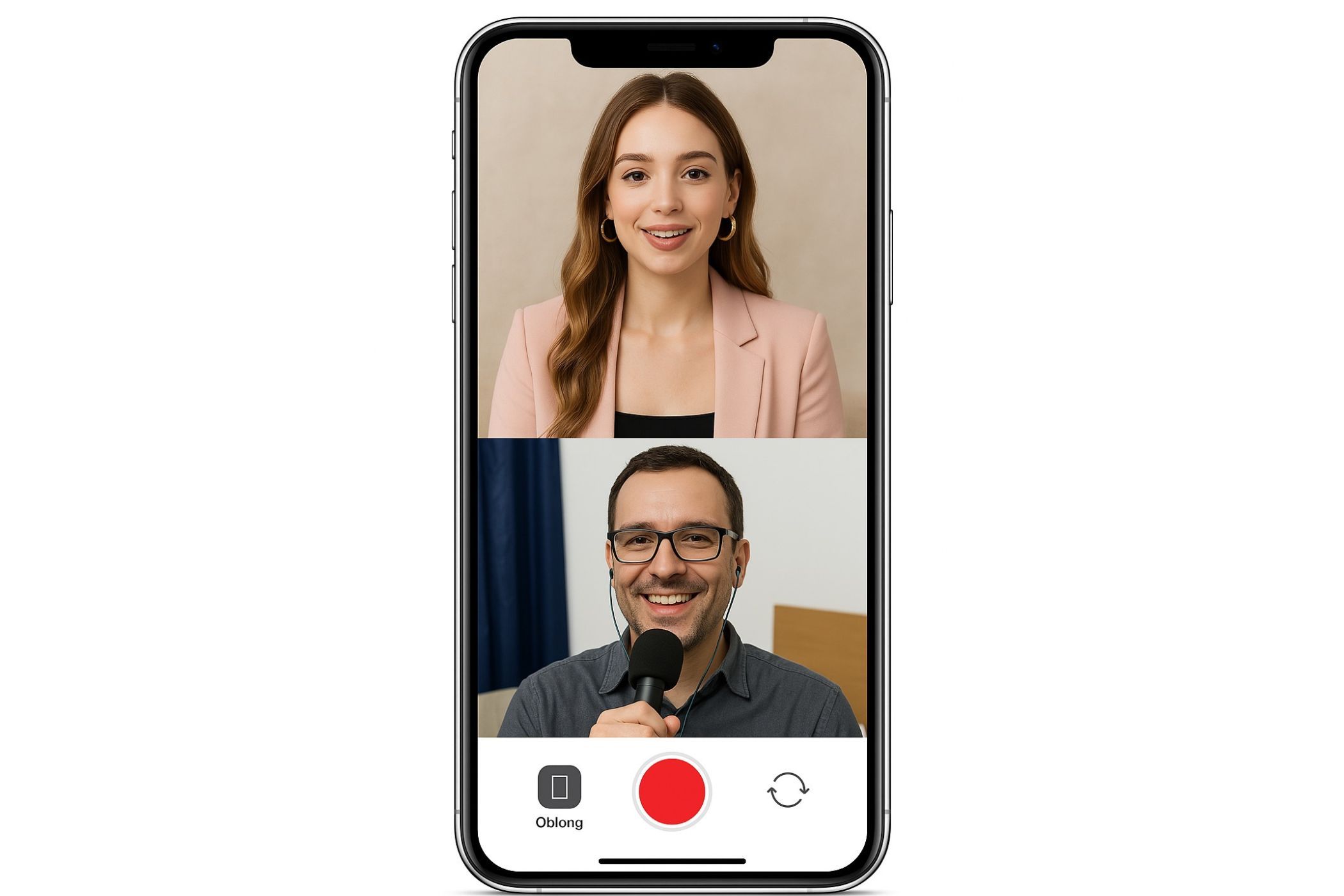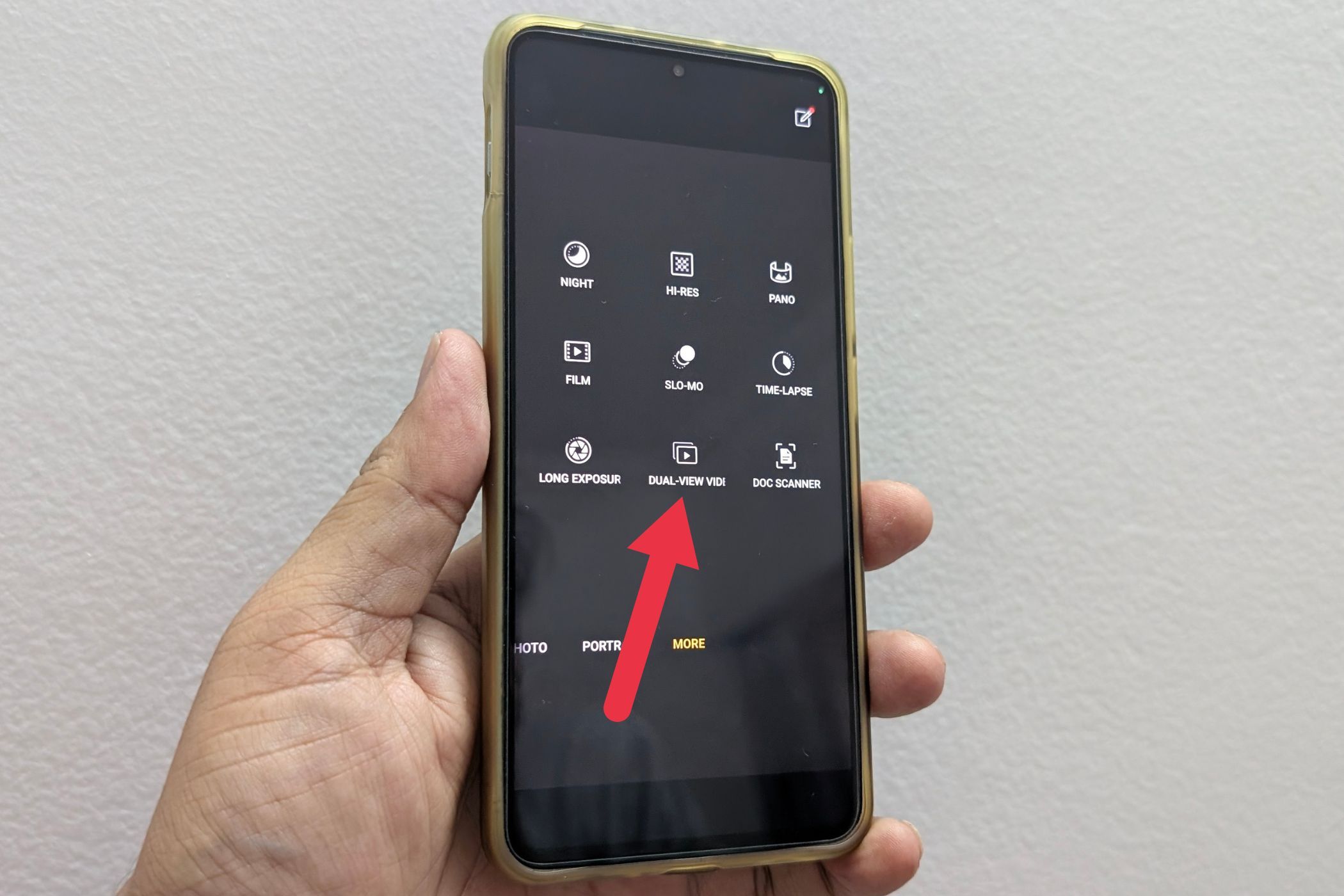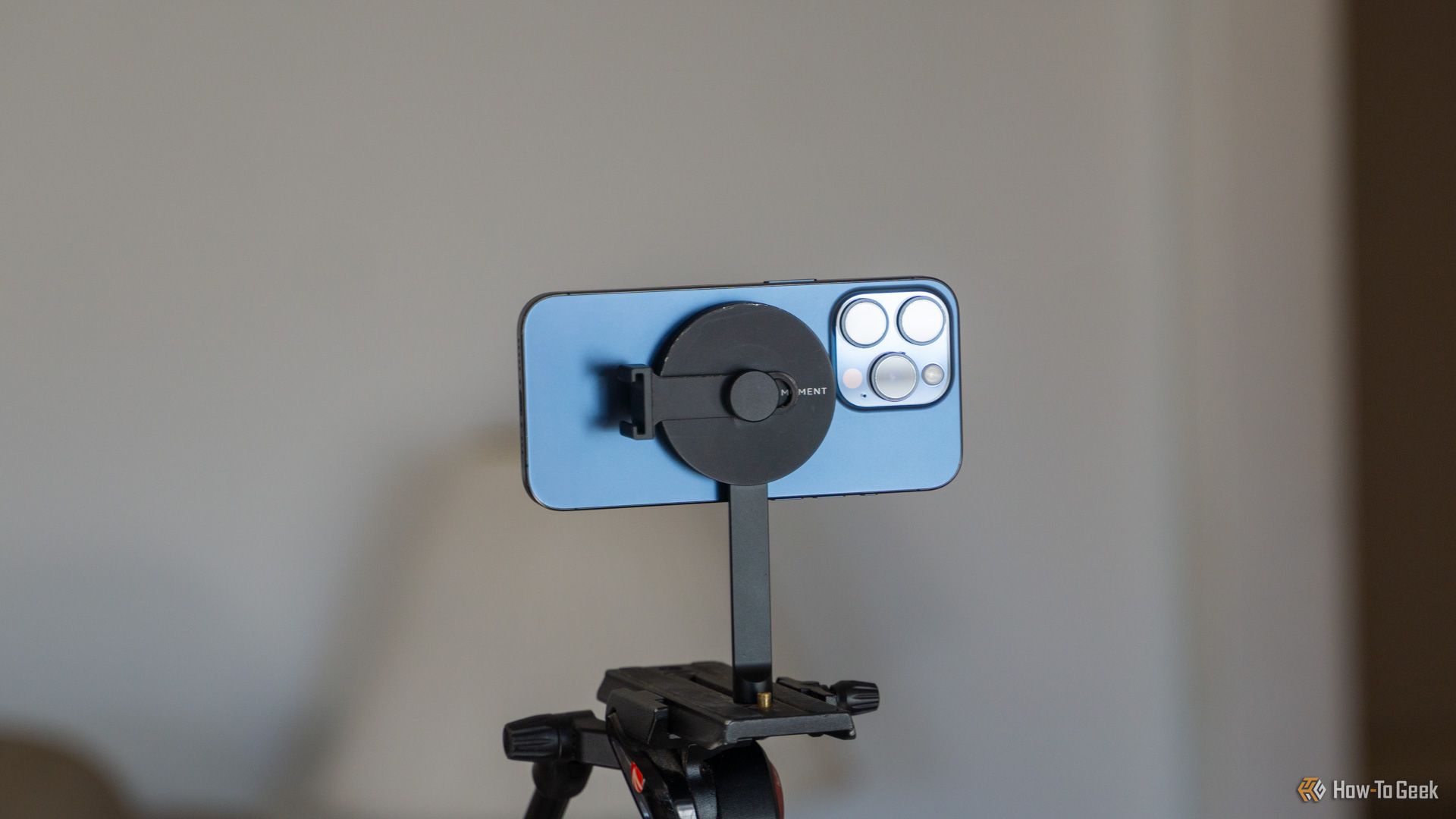Let’s be real. Every new phone launch follows the same script: better zoom, more megapixels, improved low-light shots, etc. But tucked away inside many smartphones is a feature that can actually change the way you capture your memories—and almost no one talks about it.
It’s the dual-view camera. If you’re someone who loves telling stories through video, or even just wants to make your everyday clips more personal and expressive, this tool deserves a second look.
What Is a Dual-View Camera?
A dual-view camera lets you record using both the front and rear cameras at the same time. That means you can show what’s happening around you and your reactions, at the same time, in one continuous shot.
Imagine walking through a vibrant street fair in New Orleans. The rear camera captures the jazz band playing, the food trucks lined up, and the lights flickering above. At the same time, the front camera records your excitement, your commentary, and the way your eyes light up as you soak it all in.
That’s the magic of dual-view. It doesn’t just document what’s happening—it brings your perspective into the frame, making the content more immersive and relatable.
Why Should You Care?
Because today, people don’t just want to see what you’re seeing. They want to see how you feel about it.
Platforms like Instagram Reels, YouTube Shorts, and TikTok thrive on authenticity. Viewers are drawn to creators who are expressive, emotional, and present. Dual-view makes that easier than ever. It adds a layer of personality to your content, without needing any extra gear or post-editing.
In 2025, when everyone from your cousin to your coworker is casually posting content, dual-view can be your edge. It’s an easy way to stand out and connect more deeply with the people watching.
Real-Life Scenarios Where Dual-View Shines
Let’s skip the hypotheticals and get into some practical examples where dual-view genuinely enhances your storytelling.
Travel Vlogs
You’re on a hike in Yosemite. As you reach the overlook, the back camera captures the breathtaking view. The front camera shows your exhilaration—sweaty, smiling, maybe even a little out of breath. That’s not just scenery—it’s a shared experience.
Food Reviews
Whether you’re at a local taco truck or trying a weird snack from another country, dual-view lets you show both the dish and your reaction. It’s especially great for those spontaneous, one-take videos where editing just kills the mood.
Journalism and Live Reporting
If you’re documenting an event like a protest, a festival, or a weather update, dual-view lets you report and show the scene simultaneously. You can provide commentary, context, and reactions without cutting away from the action.
Product Unboxings and Reviews
Instead of switching between you and the product, record both at once. Show the packaging, the features, and your honest expressions—whether it’s excitement, confusion, or surprise.
Conversations and Q&A Content
Put your phone between you and a guest. Dual-view lets you record both sides of the discussion, perfect for short podcasts or interviews without needing multiple cameras or mics.
Live Shows and Events
Whether you’re at a concert, sports game, or neighborhood block party, dual-view captures the energy of the crowd and your own reaction to the moment. That makes the footage feel more alive and engaging.
Educational Content and Tutorials
If you’re teaching something—like a cooking demo or a DIY hack—one camera shows your hands or the project, the other shows your face explaining it. It keeps the content clear and conversational.
Which Smartphone Brands Support Dual-View?
Samsung
Some Galaxy models offer a feature called Dual Recording or Director’s View, which lets you use both front and rear cameras. You can choose between split-screen or picture-in-picture, and it works seamlessly out of the box.
OnePlus
OnePlus phones include a Dual-View Video mode in the camera app. It’s polished, easy to access, and offers great stabilization—ideal for handheld use.
Google (Pixel)
Some Pixel devices, such as the Pixel Fold and the Pixel 9 Pro Fold, support this feature. If your Pixel doesn’t support it natively, we’ve listed some apps you can try in a later section.
Apple (iPhone)
As of early 2025, iPhones don’t have built-in dual-view functionality in the default Camera app. However, with third-party apps like DoubleTake by Filmic or Filmic Pro, you can still record using multiple cameras simultaneously.
Best Third-Party Apps for Dual-View Recording
If your phone doesn’t support dual-view out of the box, don’t worry. These apps can help unlock the feature:
- Filmic Pro (iOS & Android): A professional-grade app that supports multi-cam recording, full manual controls, and high-quality output. Great for creators who want control.
- DoubleTake by Filmic (iOS): Made specifically for dual-camera recording, this app is clean, simple, and perfect for casual users and iPhone vloggers.
Why Don’t More People Use It?
Honestly? Because it’s hidden.
Most camera apps bury dual-view deep inside the “More” tab, and manufacturers rarely promote it in ads or tutorials. Unless you’re actively exploring every camera mode, you might not even know it exists.
There’s also a myth that dual-view is only for influencers or professional creators. That’s not true. It’s actually ideal for capturing everyday moments—your kid’s first bike ride, a birthday surprise, or even a walk through your neighborhood.
You don’t need a massive audience to make your memories more personal. You just need to press record.
Tips for Shooting Better Dual-View Videos
Once you find the feature, these small tricks can make a big difference in how your videos turn out.
Plan Your Framing
Take a second before hitting record to make sure both the front and rear cameras are framed well. Avoid having your face cut off or pointing the back camera at the ground by accident.
Use a Tripod or Mount
Holding your phone steady while recording two feeds can get awkward fast. A mini tripod or clip-on mount gives you more stability and frees up your hands.
Prioritize Good Lighting
Try to face a light source so your face is well lit. Make sure the background you’re filming is also visible—not just a silhouette or blur.
Watch Your Audio
If you’re speaking, avoid noisy areas. Too much wind, traffic, or music can drown you out. You want viewers to hear your voice clearly.
Keep It Natural
The charm of dual-view is that it’s raw and real. Don’t overthink it. Don’t worry about being perfect. Just focus on capturing the moment.
Use Separate Audio Feeds (If Possible)
Some phones or apps allow you to capture audio from both the front and rear mics. This can help during conversations or interviews where both people are speaking.
Don’t Stress About Editing
Some devices save both camera feeds separately, which lets you edit them later. But you can also upload the dual-view clip as-is. It’s meant to be simple and immediate.
Where Dual-View Could Go Next
We’re still in the early stages of what dual-view can really offer. Right now, it’s a simple but powerful way to show both sides of a moment. But as we are witnessing the era of AI, this feature could become even more dynamic and immersive.
AI-Enhanced Dual-View
Dual-view already lets you share what you’re seeing and how you’re reacting, side by side. In the future, AI could make this experience more fluid. Imagine your phone recognizing a moment of surprise or laughter and temporarily enlarging the front camera feed to highlight your reaction. When the action shifts back to the world around you, the layout could smoothly adjust again.
The phone could also pick up on sound, motion, or expressions and fine-tune things like zoom or brightness automatically. You’d still see both views at once, but the presentation would feel more thoughtful and polished, without you doing a thing.
AR Integration
Combining dual-view with augmented reality could unlock all kinds of creative and practical experiences. Imagine attending a virtual museum tour. The rear camera could display an AR overlay of ancient artifacts right in your room, while the front camera captures your expressions and reactions as you explore them.
Or think about DIY projects. You could use the rear camera to follow step-by-step AR instructions while the front camera shows you asking questions or reacting when things go wrong (or right). It turns a basic tutorial into something more interactive and human.
Even during virtual events—like weddings, workshops, or fan meetups—you could see the AR stage or presentation in your space, while your front camera shows your real-time engagement, letting others feel like they’re right there with you.
As AR becomes part of more everyday apps, combining it with dual-view could make digital experiences feel less like screens and more like shared moments.
Wrapping Up
Have you tried using dual-view on your phone yet? If yes, what kind of moments do you use it for? And if not, would you give it a shot after reading this? Tell us in the comments.








